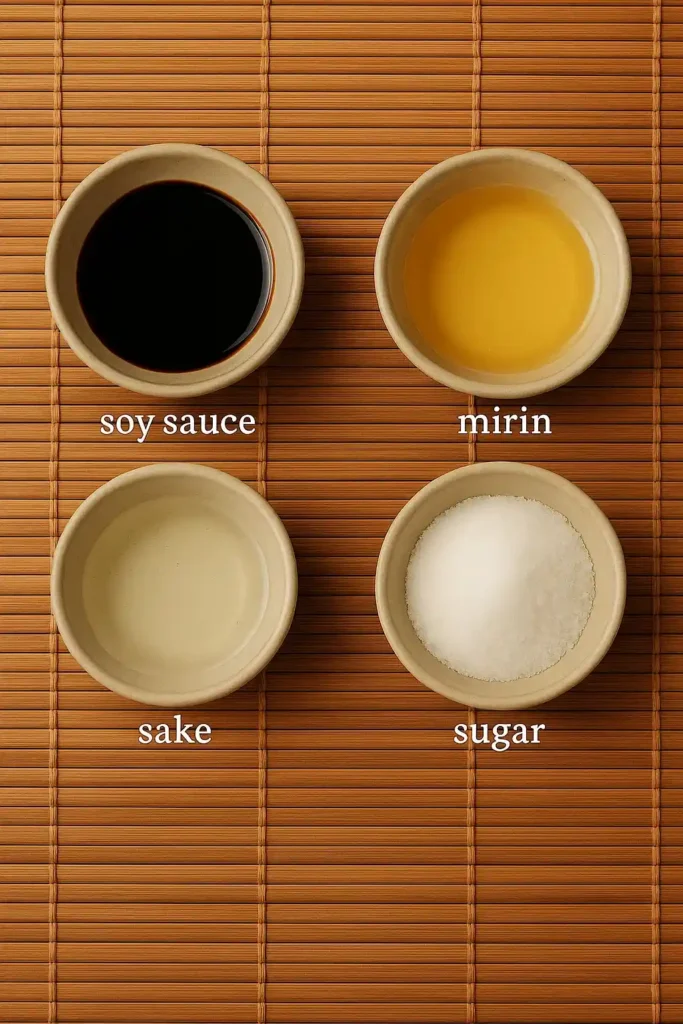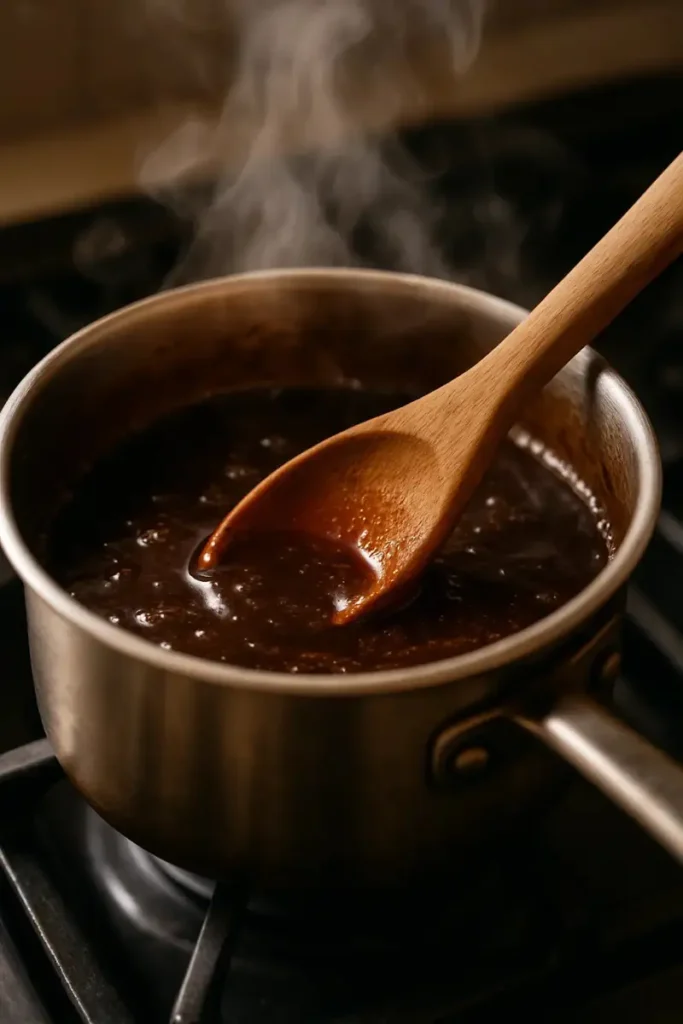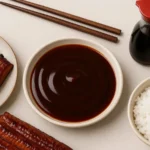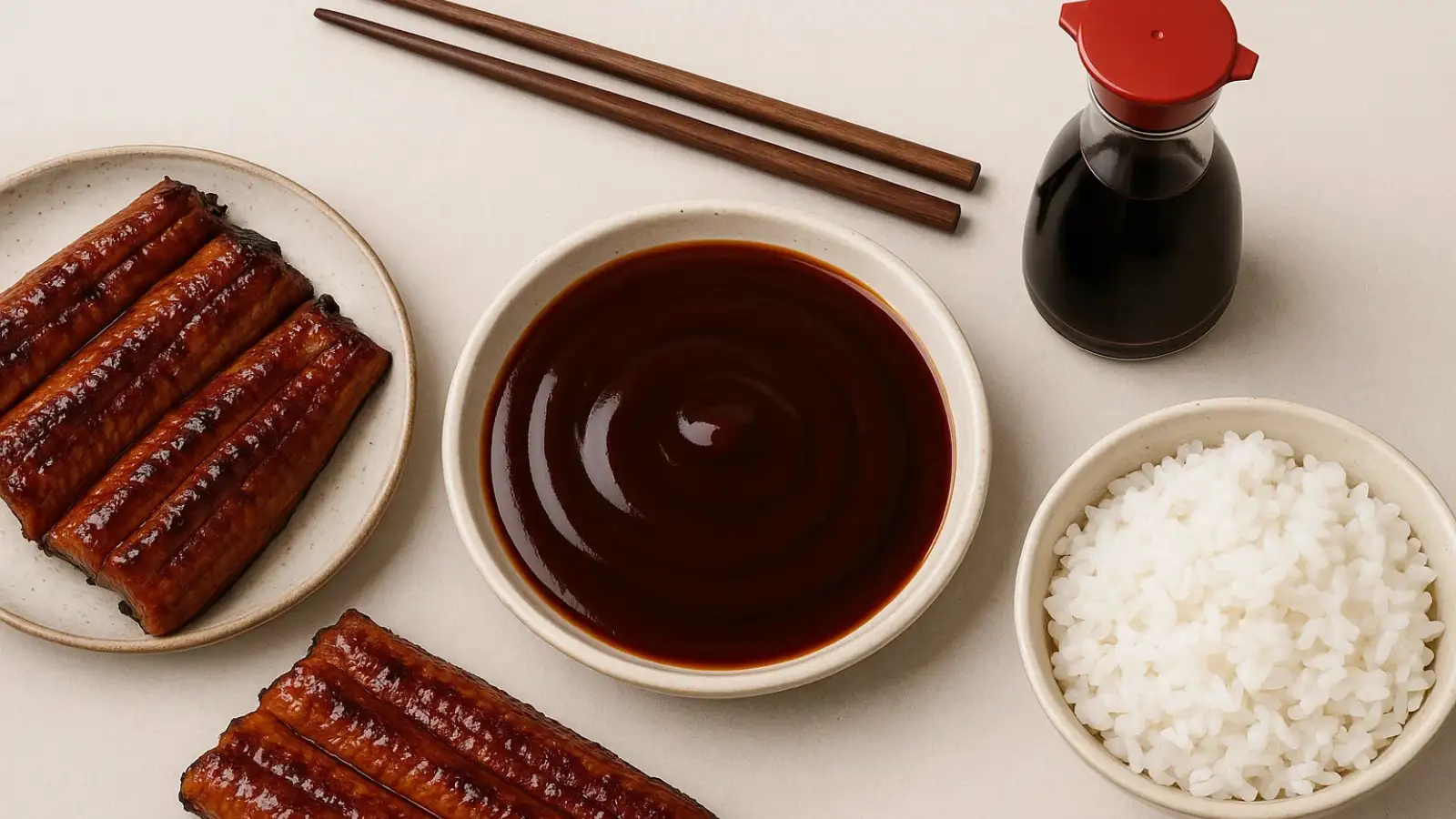Unagi sauce is one of those flavors that sticks in your memory, even if you can’t name it the first time. For me, it was late. I was eating cold sushi leftovers with a friend after a long shift. One bite into that glazed eel, and I actually stopped chewing. “What is this?” I asked. She laughed and said, “That’s the best part—the sauce.”
Back then, I didn’t cook much. But I remembered the taste—sweet, smoky, savory in a way that felt comforting. A few burned pots later, I figured it out. Soy sauce. Mirin. Sake. Sugar. Simmered slowly until it turns syrupy and deep.
This post is my take on making unagi sauce at home—what it is, how to get the flavor right, and why it’s worth having in your fridge even if you don’t eat eel. If you like flavor that feels cozy and bold at once, keep reading.
Table of Contents
Unagi Sauce: What Is It, Exactly?
The Basics—But Better
So here’s the deal—unagi sauce isn’t nearly as complicated as it sounds. I thought it was some secret blend you could only get from a sushi chef. But no. It’s just soy sauce, mirin, sake, and sugar. Four ingredients. You simmer them together, and that’s it. The result? A thick, sweet, salty glaze that tastes like it belongs on everything.
It’s the kind of sauce that makes food taste a little more… finished. I’ve brushed it on grilled salmon, drizzled it over rice, even used it as a dip for fried tofu. Once you’ve got a batch in the fridge, it ends up everywhere.
Wait—Isn’t That Just Eel Sauce?
Pretty much, yeah. People use “eel sauce” and unagi sauce interchangeably. They’re the same thing. It’s called eel sauce because it’s usually served on grilled eel, but that’s just tradition. The problem is, store-bought eel sauce isn’t always the real deal. Some bottles are full of thickeners or corn syrup.
That’s why I stick with homemade. It’s like teriyaki sauce or soy-ginger glaze: when you make it yourself, it just tastes better. Clean, simple, and no weird stuff.
Make it once, and you’ll probably wonder why you didn’t try it sooner.
Making Authentic Unagi Sauce at Home
What You’ll Need
- ½ cup soy sauce
- ½ cup mirin
- ½ cup sake
- ¼ cup sugar

How to Make Unagi Sauce
- In a small saucepan, combine the soy sauce, mirin, sake, and sugar.
- Heat it gently over medium, stirring until the sugar melts completely.
- Once it starts to bubble, lower the heat. Let it simmer slowly, uncovered.
- After 12 to 15 minutes, the unagi sauce should thicken enough to coat a spoon.
- Remove from heat and let it cool—it’ll continue to thicken as it sits.

Transfer your unagi sauce to a clean glass jar and refrigerate.
Real-Life Tips
Use authentic mirin if you can. The flavor’s deeper, smoother. And while sake gives the best balance, dry sherry works too in a pinch. Always taste your unagi sauce warm—it’s easier to adjust. Want more sweetness? Add a touch of mirin. Too rich? A splash of warm water lightens it up without losing flavor.
How to Store It
This sauce keeps in the fridge for about two weeks, though honestly—it never lasts that long in my house. If it thickens too much, just warm it slightly or add a spoonful of water to loosen. I store it right next to my mango habanero sauce and soy-ginger glaze—all three are essentials.
FAQs
What is unagi sauce made of?
It’s got just four things—soy sauce, mirin, sake, and sugar. You throw them together in a pot, simmer it low, and it thickens up into this deep, sticky sauce that’s sweet, salty, and kind of smoky. Nothing fancy. Just solid flavor from basic stuff.
What is the difference between unagi sauce and eel sauce?
There really isn’t one. People just call it “eel sauce” on sushi menus because it’s used with grilled eel. But yeah, it’s the same thing. Some bottled versions labeled “eel sauce” might add junk like corn syrup or starch, but real unagi sauce is just those four ingredients, slowly reduced. That’s what gives it that deep, clean flavor.
What does unagi taste like?
Unagi’s soft, rich, and honestly kind of buttery. It’s not fishy at all. When it’s grilled and brushed with the sauce, it’s smoky and sweet in the best way. If you’ve never had it, think somewhere between flaky fish and slow-roasted chicken—but with way more flavor.
Is unagi sauce the same as teriyaki?
Not quite. They both have soy sauce and sugar, but unagi sauce is thicker and way more intense. Teriyaki’s lighter, more like a marinade. Unagi sauce is what you use to finish something—brush it on, let it bubble up, and it sticks like a glaze.
Conclusion
Making unagi sauce at home doesn’t take much—just a saucepan and a little time. But the flavor you get from that one batch? Totally worth it. It turns leftovers into dinner and plain rice into something you actually look forward to.
I keep a jar in the fridge now. It’s one of those sauces I reach for when nothing else feels exciting. Sometimes, I’ll pair it with something from my go-to quick no-cook sauces—especially when I want to add a second layer of flavor fast. And every time I use it, I remember why I bothered learning to make it in the first place—because a good sauce changes everything.
Print
Unagi Sauce Recipe: How to Make This Sweet Umami Classic at Home
- Total Time: 17 minutes
- Yield: ¾ cup 1x
Description
This homemade unagi sauce is sweet, savory, and packed with umami. Made with just four ingredients—soy sauce, mirin, sake, and sugar—it’s perfect for glazing grilled eel, salmon, tofu, or even rice bowls.
Ingredients
-
½ cup soy sauce
-
½ cup mirin
-
½ cup sake
-
¼ cup sugar
Instructions
-
In a small saucepan, combine soy sauce, mirin, sake, and sugar.
-
Stir over medium heat until sugar dissolves completely.
-
Bring to a gentle simmer, then reduce heat.
-
Let it simmer uncovered for 12–15 minutes until slightly thickened.
-
Remove from heat and let it cool—it will thicken more as it sits.
-
Transfer to a clean jar and refrigerate for up to 2 weeks.
Notes
-
Use authentic mirin and sake for the best flavor.
-
Dry sherry can substitute for sake in a pinch.
-
Adjust sweetness by adding more mirin or reducing sugar slightly.
-
Sauce will thicken in the fridge—loosen with a bit of warm water if needed.
- Prep Time: 2 minutes
- Cook Time: 15 minutes
- Category: Sauce
- Method: Simmering
- Cuisine: Japanese
Nutrition
- Serving Size: 1 tbsp
- Calories: 35
- Sugar: 4g
- Sodium: 500mg
- Fat: 0g
- Saturated Fat: 0g
- Unsaturated Fat: 0g
- Trans Fat: 0g
- Carbohydrates: 5g
- Fiber: 0g
- Protein: 0g
- Cholesterol: 0mg

